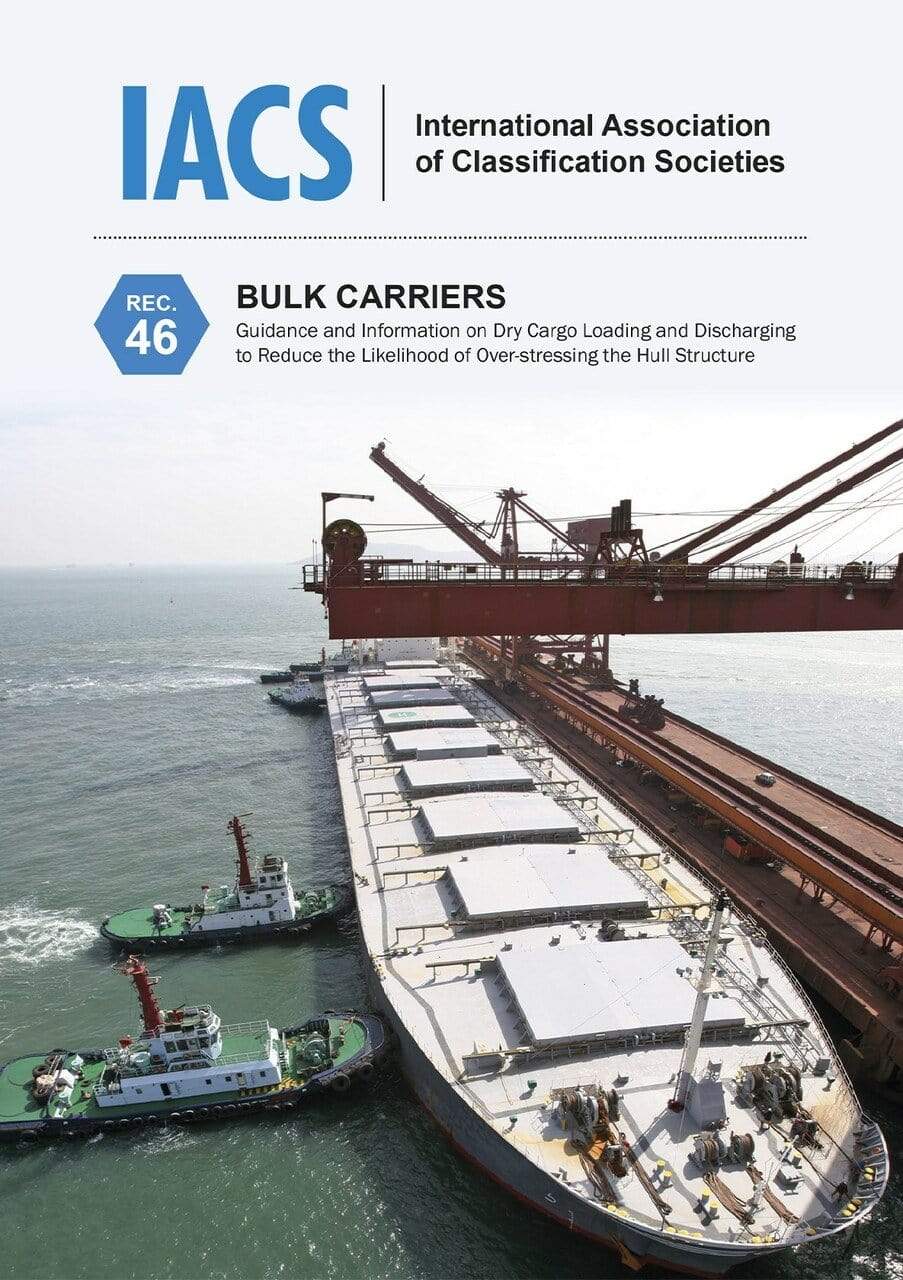Overview
This publication outlines how to stay within Classification Society specified limitations and avoid over-stressing a ship’s structure when loading and discharging bulk carriers. It looks at the loads that affect a ship’s structure and the structural strength limitations that are imposed by a ship’s Classification Society, with a particular focus on:
- Loads and hull structure
- onboard loading guidance information
- planning and control of cargo loading and unloading operations
- potential problems
- ballast exchange at sea.
This publication is intended to provide the shipping community with guidance and information on the loading and discharging of bulk carriers to remain within the limitations as specified by the classification society to reduce the likelihood of over-stressing the ship’s structure.
The loads that affect the ship’s structure are generally discussed with special reference to the structural strength limitations imposed by the ship’s classification society. The process of planning and controlling cargo operations is addressed with special reference to the derivation of the loading and unloading plans and the requirements for ship/shore communication.
A review of the potential problems that could be encountered during cargo operations is presented. Guidance is given on the measures that should be taken to monitor and control cargo and ballasting operations in order to reduce the possibility of over-stressing the ship’s structure.
Content
Acknowledgement
Disclaimer
Executive Summary
1. Introduction
2. Loads and Hull Structure
3. Onboard Loading Guidance Information
4. Planning and Control of Cargo Loading and Unloading Operations
5. Potential Problems
6. Ballast Exchange at Sea
lang="en-GB"
Introduction
The International Association of Classification Societies (IACS) is introducing a series of Guidelines with the intention of assisting the Surveyors of IACS Member Societies, and other interested parties involved in the survey, assessment and repair of hull structures for certain ship types.
The Guidelines are intended for a general dry cargo ship, single skin, which is designed with one or more decks specifically for the carriage of diverse forms of dry cargo.
The Guidelines focus on the IACS Member Societies’ survey procedures but may also be useful in connection with inspection/examination schemes of other regulatory bodies, owners and operators.
The Guidelines include a review of survey preparation criteria which cover the safety aspects related to the performance of the survey, the necessary access facilities, and the preparation necessary before the surveys can be carried out.
The Guidelines encompass the different main structural areas of the hull where damages have been recorded, focusing on the main features of the structural items of each area.
An important feature of the Guidelines is the inclusion of the section which illustrates examples of structural deterioration and damages related to each structural area and gives what to look for, possible cause, and recommended repair methods, when considered appropriate.
The Procedure for Failure Incident Reporting and Early Warning of Serious Failure Incidents - “Early Warning Scheme - EWS”, with the emphasis on the proper reporting of significant hull damages by the respective classification societies, will enable the analysis of problems as they arise, including revisions of these Guidelines.
These Guidelines have been developed using the best information currently available. It is intended only as guidance in support of the sound judgment of surveyors, and is to be used at the surveyors’ discretion. It is recognized that alternative and satisfactory methods are already applied by surveyors. Should there be any doubt with regard to interpretation or validity in connection with particular applications, clarification should be obtained from the Classification Society concerned.
Details
Number of Pages: 62
ISBN: 9781856099301
Published Date: April 2020
Binding Format: Paperback
Book Height: 230 mm
Book Width: 160 mm
Weight: 1.7 kg








